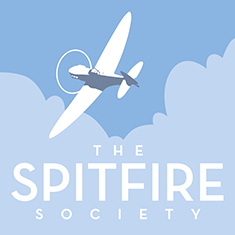Review of Bristol Aerospace Museum
Bristol Aerospace museum has recently opened at on the former Filton aerodrome situated to the North of Bristol and the former manufacturing hub for Bristol Aeroplane Company, British Aircraft Corporation, Bristol Siddeley, British Aerospace, BAE Systems, Rolls-Royce and Airbus.
When I visited it was significantly busy with large number of families attending and wished I had booked tickets in advance! The Museum begins with the start of the Company in 1910 with the remarkable story and foresight of Sir George White as the founder and his progressive approaches to staff welfare. The early designs were licensed copies of other manufacturers such as the Boxkite but the Chief Designer Frank Barnwell started to produce important designs for Britain’s war effort such as the F.2B Bristol Fighter and Bristol Monoplane Scout.
The interwar period saw the acquisition of Cosmos Engineering Company and the start of the lucrative Bristol Aeroplane Engines division based on the hugely successful Jupiter engine designed by Roy Fedden. The Company’s most successful aircraft design of the period was the Bulldog which equipped the RAF along with Denmark, Estonia, Finland, and Australia as their front line fighter. A private commission named Britain First produced a highly advanced twin engine monoplane which would involve into the Bristol Blenheim. By the end of the 1930s, Bristol Aeroplane Company were the largest manufacturer of aircraft in the world and would play a significant part in equipping the RAF during the Second World War.
The Blenheim would be modified to create two new designs in the shape of the Beaufort and Beaufighter under the design leadership of Leslie Frise. There is a rare example of the Beaufighter with a cutaway of the fuselage illustrating the heavy armament carried. Also highlighted is the Bristol Pegasus and Hercules engines which was fitted to the Avro Lancaster, Bristol Beaufighter, Handley Page Halifax, Short Stirling, Short Sunderland and Vickers Wellington amongst many others.
In some ways the post story of Bristol Aeroplane Company is even more fascinating and interesting which takes in the diversity of products they developed. In terms of aircraft they developed the challenging Brabazon which was overtaken by the development of jet engined airliners such as the de Havilland Comet and the Boeing 707. More commercial success came with the Britannia and Freighter, the former a four engine turbo prop airliner and the latter a transport aircraft ideally suited for non developed countries where operating in rough conditions was required. Other industries that the Company diversified into included Bristol Cars, there is a stunning cutaway on display showing some unique design features and that the technology was based on BMW research. The Plastics Division which had worked on perplex during the Second World War developed fibre glass products for Lotus Cars and sailing dinghies. The Company also manufactured prefabricated houses to address the housing crisis following the War brought about by bombing and slum clearances. Bristol Helicopters included two significant designs for the RAF, Belvedere and Sycamore, both represented by examples in the Museum which allowed the development of air sea rescue and heavy lift operations. There was also two design projects into high speed flight known as the Types 188 and 223, the latter would become Concorde and all British Concorde would be manufactured at Filton. The pièce de résistance of Bristol Aerospace is the display of Concorde G-BOAF, this includes a multimedia display along the fuselage of the aircraft, walk through of the cabin and simulator.
For all images click on link below.








